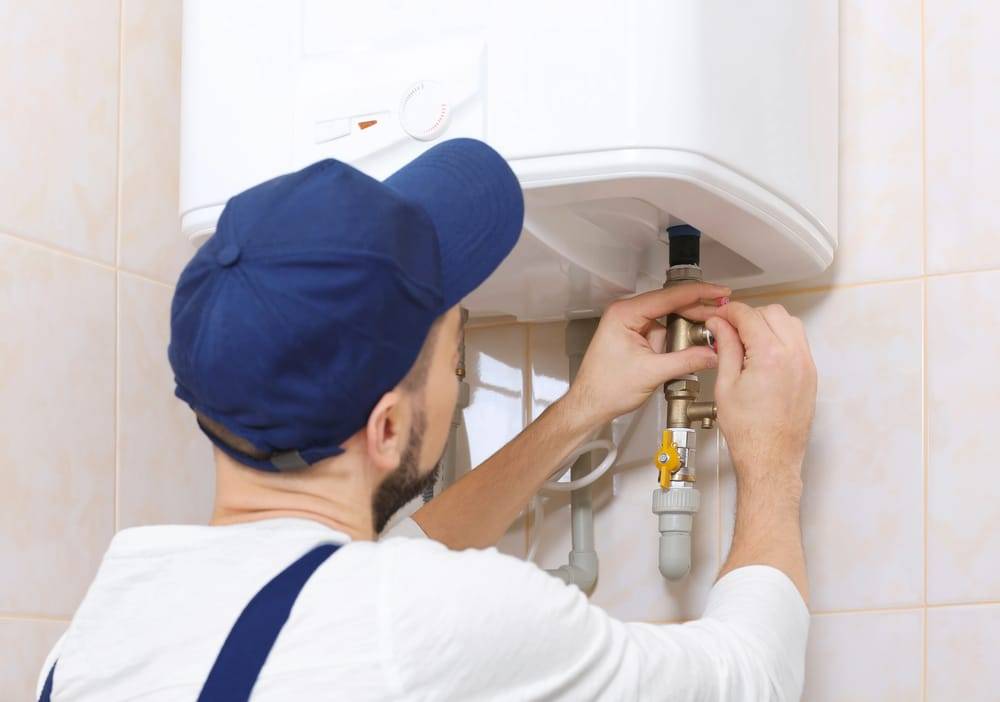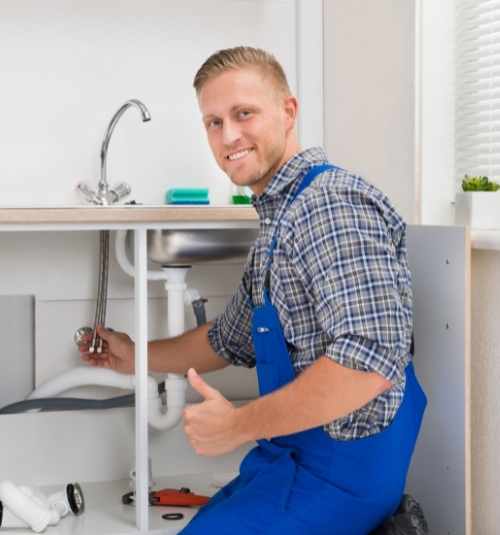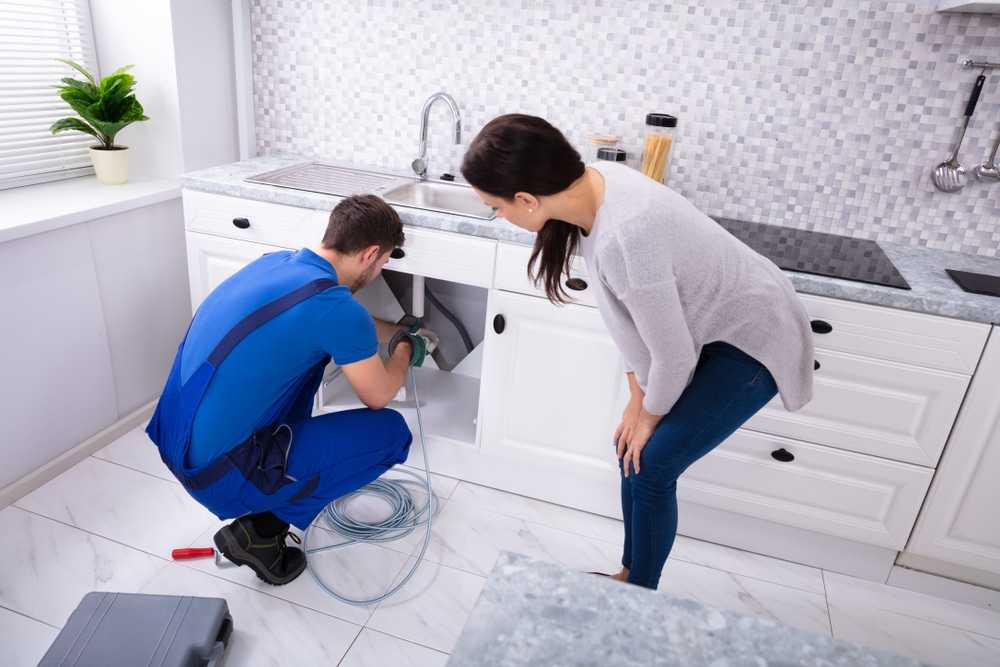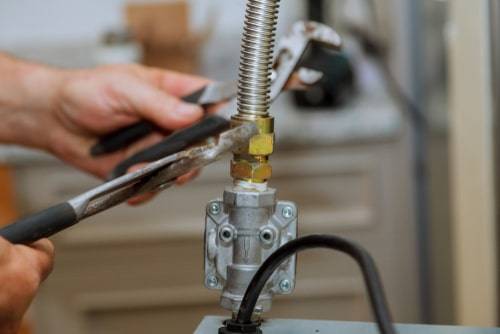Ever wondered how water magically appears when you turn on your tap in Sacramento, CA? Dive into the journey from the source to your tap, understanding every crucial piece of your home’s water supply system. Stay informed and ensure your water flows flawlessly! 💧🏡
Understanding Your Home’s Water Supply System
The journey of water from its source to your home’s tap is an engineering marvel that ensures you have safe and reliable access to water at all times. This blog will guide you through the various components of the water supply system and water service line; (like the shut off valve, gate valves, main water supply line, water heater, and water pipes) how they work together, and what you can do to maintain them effectively.

The Journey Begins: Water Sources 🌊
Water is essential to life, and its journey to our taps is a fascinating process governed by both nature and engineered systems. In Sacramento, the water supply for homes and businesses is drawn from a variety of natural sources, each selected based on geographic and environmental considerations. Understanding these sources can enhance our appreciation of the water we use daily.
Rivers and Streams
Sacramento River and American River: These are the primary sources of water for Sacramento. These rivers are fed by snowmelt from the Sierra Nevada, which provides a reliable flow throughout the year. Water from these rivers is diverted via a series of channels and pipes to treatment facilities before it reaches consumers.
Reservoirs
Folsom Lake and other reservoirs: Reservoirs are critical components in Sacramento’s water supply strategy, acting as storage solutions to ensure water availability during dry months. Folsom Lake, which is fed by the American River, is a key reservoir that regulates water flow to meet agricultural, industrial, and residential needs.
Groundwater Aquifers
Underground Aquifers: Beneath the surface, large aquifers store groundwater that can be accessed through wells. In years of drought, groundwater becomes an essential source, supplementing the water supplied by rivers and reservoirs. Sacramento utilizes these aquifers to balance water supply throughout the year, especially in response to seasonal fluctuations in river flows.
Environmental Considerations
The choice of water source is heavily influenced by environmental factors. For instance, during wet years, surface water from rivers may suffice to meet the city’s needs. However, during droughts, reliance shifts towards reservoirs and groundwater to ensure a continuous supply. Managing these sources sustainably is crucial to prevent depletion and maintain ecological balance.
Geographical Factors
Sacramento’s geographical layout with its proximity to both mountain-fed rivers and vast underground aquifers provides a unique advantage. This positioning allows for a diversified water supply, which is crucial for resilience against climate variability and increasing demand from urban expansion.
Treatment: Ensuring Water Quality 🚰
Ensuring the safety and quality of the water that flows from your tap is a complex process that involves multiple steps of treatment. These treatments are meticulously designed to remove contaminants and make the water safe for drinking and other uses. In Sacramento, as in many other cities, the treatment process involves several key stages:
Filtration
Purpose: The primary goal of filtration is to remove physical particles and sediments from the water. These can include dirt, sand, silt, and other suspended solids that might have entered the water from natural sources or through runoff.
How It Works: Filtration systems typically use a series of filters that consist of sand, gravel, and sometimes charcoal. As water passes through these materials, particles are trapped, allowing only clean water to pass through. Advanced filtration systems can also include microfiltration or ultrafiltration processes that are capable of removing even finer particles, virtually invisible to the naked eye.
Disinfection
Purpose: After filtration, the water must be disinfected to eliminate any remaining harmful bacteria, viruses, and other microorganisms that can cause disease. This step is crucial for preventing waterborne illnesses.
Methods:
- Chlorination: This is the most common method of disinfection. Chlorine or chlorine compounds are added to the water because of their effective and lasting ability to kill pathogens. The chlorine levels are carefully controlled to be strong enough to disinfect but safe for consumption.
- Ultraviolet (UV) Light: UV disinfection is a physical process that involves exposing water to UV light. This light damages the DNA of harmful organisms, rendering them harmless. UV treatment is effective and does not leave any residual chemical in the water.
Safety Measures: Post-disinfection, the water is tested to ensure that it meets safety standards. This ensures that the disinfectant has worked effectively and that the resulting water is free from pathogens.
Chemical Adjustments
Purpose: The final step in water treatment involves making chemical adjustments to ensure the water is not only safe but also pleasant to use and non-damaging to infrastructure.
Processes:
- pH Adjustment: Water with a very high or very low pH can be corrosive to pipes and uncomfortable to use. Adjusting the pH (usually by adding lime or soda ash) helps stabilize the water, making it neutral and safer for the infrastructure and more pleasant for consumption.
- Mineral Addition: Depending on the source water’s composition, minerals might be added to improve taste or adjust hardness. For instance, calcium or magnesium can be added to soften hard water, which helps protect plumbing and improves the effectiveness of soaps and detergents.

Main Supply Line: The Connection to Your Home 🏠
The journey of water from treatment facilities to your home is facilitated by a network of pipes, starting with the main supply line. This crucial component ensures that all treated water reaches residential areas efficiently. Understanding how this system connects to your home can help you better manage and maintain your household’s water supply.
The Main Supply Line
- Structure and Function: The main supply line is a large pipe that typically runs parallel to your street, sometimes buried under sidewalks or along other public right-of-ways. This pipe is part of the municipal water system and is responsible for distributing water from the city’s water treatment plant to various neighborhoods and homes.
- Material and Durability: These main supply lines are usually made from materials that can withstand high pressure and environmental wear, such as ductile iron, PVC, or in some cases, steel. The choice of material ensures the longevity and reliability of the water supply system.
Connection to Your Home: The Service Line
- Service Line Overview: Branching off from the main supply line is the service line—a smaller diameter pipe that specifically directs water to your property. This service line runs from the main line, usually at the street, directly into your home, and is often buried in your yard.
- Homeowner’s Responsibility: Unlike the main supply line, which is maintained by the municipal water utility, the service line is typically the homeowner’s responsibility. This means any issues such as leaks, breaks, or maintenance within the service line need to be addressed by the homeowner. Recognizing this responsibility is crucial for effective water management and avoiding water loss or damage to your property.
- Point of Entry: The service line usually enters your home at a foundation wall or basement and is connected to a water meter, which measures your household’s water usage. This meter can often be found near where the service line enters the property, and it is crucial for both billing purposes and monitoring water use.

Water Meter: Tracking Your Usage 💧
Your water usage is tracked via a water meter, usually located near where the service line enters your property. This meter is essential for ensuring you’re billed correctly for the water you use. Regular monitoring can also help detect leaks early, potentially saving you from high water bills and costly repairs.
Pressure Regulators and Valves 🔄
To maintain a consistent pressure suitable for home use, pressure regulators are often installed where the service line enters your home. These devices help prevent damage to your plumbing system caused by high pressure and ensure a pleasant user experience.
Inside Your Home: Pipes and Plumbing 🛠️
Once water enters your property through the service line, it is distributed throughout your home via a network of smaller pipes that ensure it reaches every faucet, shower, and appliance. The material choice for these pipes can significantly affect their longevity, cost, maintenance needs, and overall water quality. Let’s explore the most common types of plumbing materials used in homes today: copper, PVC, and PEX.
Copper Pipes
Pros:
- Durability: Copper pipes are extremely durable and have a proven track record, often lasting over 50 years. They are resistant to corrosion and can withstand high temperatures, making them ideal for hot water lines.
- Water Quality: Copper is biostatic, meaning bacteria will not grow on its interior. This property helps maintain water purity throughout its journey in your home.
- Recyclability: Copper is also environmentally friendly due to its ability to be recycled, reducing its environmental footprint.
Cons:
- Cost: Copper is generally more expensive than other types of plumbing materials due to the cost of raw materials.
- Installation Complexity: Installing copper piping requires soldering, which can be more labor-intensive and require skilled labor, adding to installation costs.
- Corrosion in Certain Conditions: Although generally resistant to corrosion, copper can corrode in certain pH conditions, particularly if the water has a low pH or is very acidic.
PVC Pipes
Pros:
- Cost-Effectiveness: PVC pipes are much cheaper than copper, making them a popular choice for budget-conscious homeowners.
- Ease of Installation: These pipes are lightweight and easy to cut and join, which can reduce installation time and costs.
- Chemical Resistance: PVC is resistant to many chemicals, making it suitable for the drain, waste, and vent lines where corrosive wastes are common.
Cons:
- Temperature Sensitivity: PVC can warp or melt at high temperatures, so it is not suitable for hot water lines unless specifically rated for such use.
- Environmental Concerns: PVC is not as environmentally friendly as other materials due to potential chemical releases during manufacture and disposal.
PEX Pipes
Pros:
- Flexibility: PEX piping is highly flexible, which allows it to be installed with fewer fittings and in tighter spaces. This flexibility also makes it resistant to breaking during freezes.
- Heat Preservation: PEX has good insulative properties, which can help reduce heat loss as hot water travels through the pipes.
- Ease of Installation: PEX does not require soldering and uses quick-connect fittings that make installations quicker and reduce the risk of leaks.
Cons:
- UV Sensitivity: PEX cannot be exposed to sunlight for prolonged periods as UV rays can degrade the material, limiting its use to indoor applications.
- Longevity Concerns: While still relatively durable, PEX may not have the same lifespan as copper under certain conditions.
Each of these materials offers distinct advantages and may be more suitable for different areas of your home depending on local building codes, the nature of your water supply, and specific household needs. Understanding the properties of each type of pipe can help you make informed decisions when it comes to upgrades, repairs, or initial installations, ensuring your home’s plumbing system is efficient, safe, and up to standard.
Maintaining Your Water Supply Line ✅
Maintaining your home’s water supply line involves:
- Regular Inspections: Check for leaks, especially at joints and connection points.
- Winter Preparations: Prevent pipes from freezing and bursting in colder months by insulating them.
- Water Quality Checks: Use water filters and soften systems to manage the hardness of the water, which can affect your plumbing and appliance efficiency.

Conclusion: A Clear Flow from Source to Tap
Understanding your home’s water supply system enhances your ability to manage it effectively, ensuring that you always have access to safe, clean water. Regular maintenance and prompt repairs can keep the system running smoothly, avoiding disruptions and potential damage.
Ready to Take Charge of Your Water Supply? 🌟
Don’t let plumbing issues dampen your day! Contact Miracle Works Plumbing & Drain today and take the first step towards perfect plumbing peace of mind. With our expertise, your water supply system will always be in top condition, ensuring that you and your family enjoy pure, uninterrupted water flow at all times. Ask about our preventative maintenance plan. Be proactive—let us help you keep your water running perfectly!



